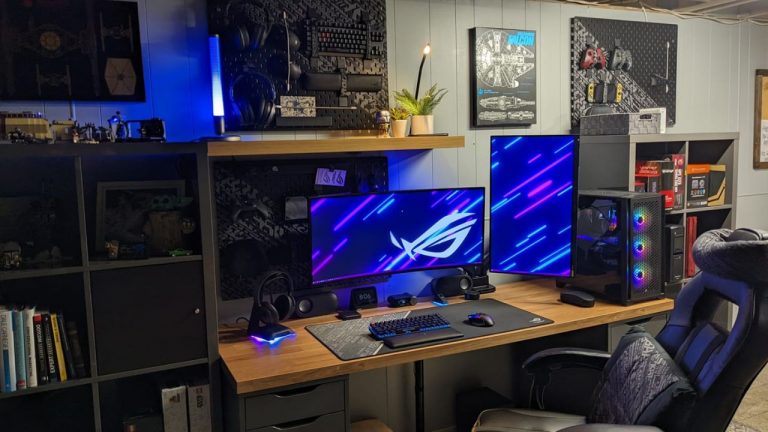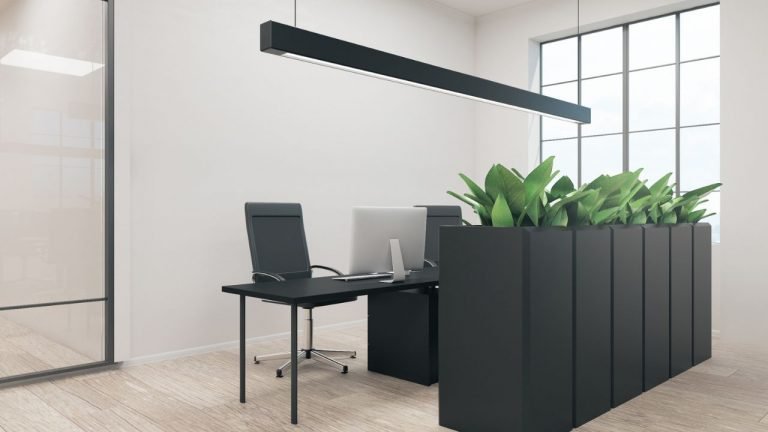Best Home Office Lighting Setup For Reducing Eye Strain
You never realize just how important the lighting setup is until your eyes give up. You can even have dry eyes or a headache at the end of the day. Something must be wrong with your home office. And, most of the time it’s the light tubes you are using.
So, which lighting is ideal to prevent damage to your eyes?
LED light tubes are the best lighting source for your new home office. It has the right amount of brightness to mimic natural day light. Unlike traditional fluorescent bulbs, it doesn’t generate harmful radiation that can affect your eyesight.
In this article, we will discuss the best home office lighting setup for reducing eye strain. Well, you have already guessed it from the title. Apart from that, we will explain how different lighting sources can impact our eye health and why.
So, buckle up because we are about to take a ride.
What Lighting Is Best For Eye Strain?
First of all, let’s try to understand what eye strain means. It is not a disease. It is only a symptom or reason that leads to further complications. For example, if you already suffer from myopia or astigmatism, then straining your eyes frequently will worsen those conditions. You might end up having more powers in your glasses than before. Or worse, you could get a headache almost every day after the shift is over.
That’s why you should take strained eyes very seriously. So, what kind of lighting is best for your eyes? For that, let’s examine the most commonly used lighting sources one by one. Hopefully, we will find our answer by the end of the discussion. Are you ready?
Fluorescent Light
Fluorescent light tubes are famous in a typical workstation. They are kind of old-fashioned and not popular anymore. Light emits from the bulbs as the result of an explosion. It happens when the electrons of two different atoms collide together.
You can’t expect a long lifespan from these bulbs. Also, the flickering lights when the bulb gets old can cause serious headaches.
You can also develop symptoms like blurred vision or double vision. Feeling a burning sensation in the eye and wanting to scratch it all day is one of the many signs of eye strain. And, the problems only keep getting bigger and more serious.
If you have blue eyes, the risk is far greater. You see, blue eyes lack enough pigments to protect the eyes from UV or fluorescent lights. People with black corneas are blessed in this case. So, fluorescent lights are a big NO.
Blue Light
Your eyes are exposed to blue lights right now as you are reading this article. Digital devices like smartphones, Television, computer screen, etc cause blue light emissions. Scientists have announced that too much exposure to blue lights can slowly damage your retina over time. It dries up the moisture in the eyes and you end up getting a headache. Apart from that, blue light disrupts our sleeping habits as well.
Sometimes, we even go to the extent to have screen time in a dark setting. For example, watching tv while keeping the light off. It makes the situation even worse for your eyes.
When there is no other source of light, the higher energy of the blue lights can become too harsh for the eyes. As a result, you will notice tears rolling down the eyes all of a sudden. Your eyes are feeling triggered to produce more tears because it is drying up faster than usual. Also, you will find it harder to focus on the screen without breaks.
The moral of this discussion is that blue light is something you must avoid.
Natural Light/ Sun Light
Sunlight is the best way to keep the lighting natural in your home office. But, is it good for your eyes? You might get surprised, but too much sunlight is not good.
Sun-light contains UV-A And UV-B rays in it. And, this wavelength is considered super harsh by scientists for your skin and eyes. Have you ever wondered why is it recommended to use sun-block before going outside?
Sun rays contain vitamin D which strengthens the bones. Then, why do you use shades or hats? You see, the small benefit of vitamin D comes at a greater cost. You can permanently damage the eyes if you stare into the sun for a longer period. That’s scary, right?
Apart from this health concern, it can be harder to focus on the computer screen under direct sunlight. We call it, the “glare.” It refers to the lack of comfort in your eyes when too much light is surrounding the area. Especially when the desk is set up against or beside a big window this problem can become prominent. So, how should you set the desk for optimum lighting? We will talk about that further in this article. So, keep reading.
LED Light
LED lights are by far the best option for a home office setup. It can mimic the natural tone of sunlight pretty accurately. That means you are getting the brightness of the natural light without the harmful rays in it. That’s a pretty good deal.
LED lights are designed to minimize any kind of infrared radiation that can be detrimental to your health. Along with that, it also generates less amount of heat. As a result, you can expect it to last for 75,000 hours easily. Most commercial buildings nowadays rely on LED tubes for lighting. You can also customize the lighting to have a color theme. This enhances the experience of anyone working there.
Another interesting feature of LED lights is that you can adjust them. You can increase the lighting during the night and reduce it during the daytime. It helps to give the maximum amount of support for the eyes throughout the work shift.
What Color Light Helps Reduce Eye Strain?
We know the type of lighting that reduces eye strain. But, which color should it be? Have you ever thought about it before? Well, you are going to find the answer here.
You see, colors are nothing but a specific length of waves. When light falls into an object, it absorbs some portion of it and reflects the rest. Human eyes interpret the reflected wavelengths as color. We can visualize any wave length from 380 nanometers to 680 nanometers.
We have shown colors and their wave lengths in the following table. There you can see that red has the longest wavelength while violet and blue have the shortest. It means that blue or violet color can be harsh to our eyes while doing desk work.
That’s why we suggested you avoid the blue lights emitting from your digital devices in the previous section. The shorter the wavelengths the higher energy it can radiate and affect the corneas of your eyes.
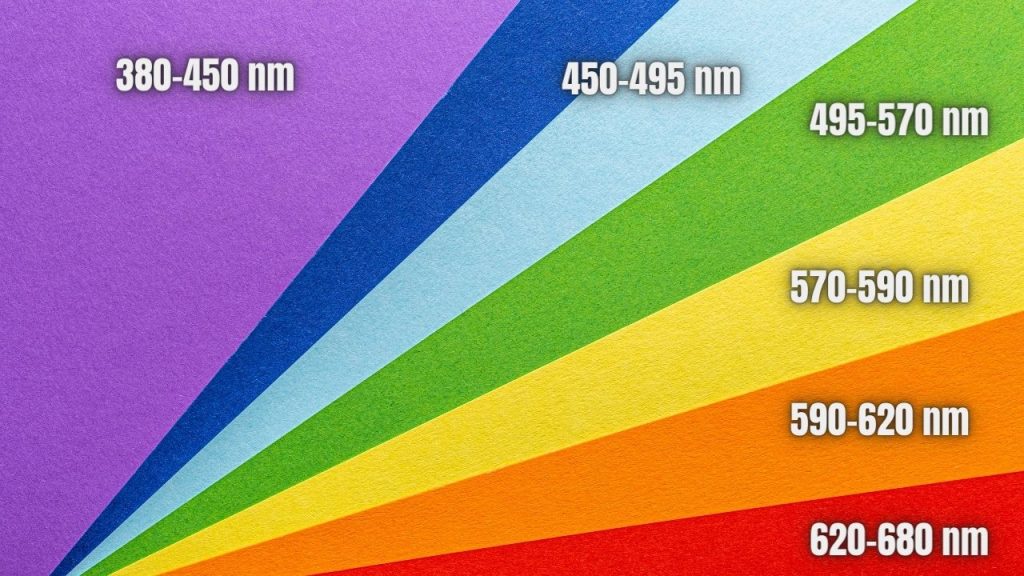
On the other hand, red or orange is too dim because of the longer wavelengths. Red is considered a very warm tone of color. You have to focus more to see or read something in red lighting. That too causes eye strain.
However, the green or yellow color remains right in the middle of this spectrum. Both colors are considered to be the ideal type for lighting. The yellow color gives off a cheerful vibe. It is also easier to focus on a passage if the fonts are yellow. But, one thing to keep in mind is that no color is good if you are exposed too much to it. Always, try to strike the right balance when you are customizing the office lighting.
| Rainbow Colors | Wave-length (nm) | As Lighting Background |
|---|---|---|
| red | 620-680 | Too dim |
| orange | 590-620 | Too dim |
| yellow | 570-590 | cool |
| green | 495-570 | cool |
| Blue | 450-495 | harsh |
| Violet | 380-450 | harsh |
Now, the wavelength from 100 to 380 nm consists of ultraviolet or UV rays as we call it. You can’t see it because the wavelengths are way too short. This makes UV rays practically harmful to our eyes.
You see, there are three categories of UV light: UV-A, UV-B & UV-C. Only the first two types can penetrate the eyes or skin through exposure to sunlight. You can get sun damage to your skin if you are not using sunscreen properly. That’s what doctors tell us. Now imagine the extent of harm it can cause your eyes which are more vulnerable than your skin.
Well, our suggestion is simple. Use sun block for your eyes along with a hat if possible.
How Do You Light A Room To Reduce Eye Strain?
Here are some techniques to light up your home office. Check them out.
Avoid Harsh Lighting
Harsh interior lighting can be very uncomfortable for longer work hours. The same goes for a darker set-up. Remember when you choose the lighting for home-office, comfort should be the priority. Don’t hesitate to discard the typical fluorescent tubes or any kind of blue lighting in the background.
Our suggestion is to stick with adjustable LED lights or CFLs (compact fluorescent lights). CFLs are a modern version of traditional fluorescent tubes. It comes with a protective shield to block all the harmful UV rays from affecting your eyesight.
Spread The Light Bulbs Evenly
One mistake many of us make is stuffing one area with too much lighting. The reason might be to highlight a showpiece or art in the room. For a home office, you need to avoid this interior rule. Uneven lighting can increase the harshness of rays in one corner while keeping the other corner in darkness.
It can also create a “glare” on the computer screen. The blue lights coming out of the screen gets even harsher if the background lighting is not even. We have already discussed how it impacts your eye health.
So, evenly spread the light bulbs or tubes throughout the room. Make sure each corner is getting the same amount of light.
Eliminate “Sun-Glare”
Adjust your desk setting to reduce the amount of glare on the laptop or desktop screen. You can avoid it by placing the work desk in the center of the room or away from the window. Since the sun rays get into the room through the window, try to use shades or blinds to minimize it.
Use Additional Desk Lamps
Task lamps are a great way to get some extra support for your eyes. Especially during the night when you need to focus on writing or reading, the light bulbs could lack enough brightness. It would cause even more discomfort if you have a lower vision or need to wear glasses. Task or desk lamps can reduce the stress from your eyes while reading small letters in a book.
Reduce The Screen Brightness
A minimum level of screen brightness is necessary for you to work properly. But don’t make it too much. Sometimes desktops or smartphones come with a pre-set brightness from the factory. It tends to be more than we need. However, due to laziness, we end up adjusting our eyes to that brightness level instead of reducing it.
If your room has optimum lighting in the background, you can see properly even with a lower brightness on the screen. Less screen brightness also indicates lower amount of blue light emission. That’s a big plus point.
Another piece of advice we have for you is to install a cover glass on your desktop. It manipulates the wavelengths coming out of the device. As a result, it doesn’t affect our eyes in a bad way.
What Is The Healthiest Lighting For An Office?
The healthiest lighting for your home office would be a warm white or yellow LED light tube. Note that we are choosing a warm tone instead of the cool one. Because the “cool” tone tends to be blue light. As for white, it is not a core color. When you mix all the colors in the rainbow, you get white.
You can keep the color slightly “yellow” if you want. Yellow has a medium wavelength that doesn’t generate a high amount of energy.
Natural light is also pleasant to the eye. It has a warmth of its own. If you can control the amount of light entering the room through blinds, it would work the best.
Bonus Tips For Reducing Eye-Strain
- Try to blink more as you watch something on the screen. Blinking actually helps to evenly distribute the moisture throughout the eye. It reduces the dryness you feel afterward. If this trick doesn’t work for you, buy eye drops that help to restore the natural moisture within the eyes.
- Drink loads of water. It might sound silly. But being hydrated prevents a lot of health issues including eye strains.
- Take at least 5 minutes of break every half an hour. It relaxes your eye and you don’t get tired easily.
- Keeping a straight posture is the key too. You shouldn’t slump over the table. It will eliminate the essential distance you ought to keep with the screen. You should get an office chair that allows you to maintain the right posture throughout the day.
- The best advice we could give you is to use protective glasses. Get yourself a pair of glasses that can block blue lights from entering the eyes. Those can be a bit expensive. But it is totally worth it.
- If you are using LED lights, you have the privilege to adjust them however you wish. You can keep it dim during the day and increase it at night. That way, you can ensure that your eyes are always getting sufficient light & support.
Wrapping Up
Which body part is most impacted by your decision to work remotely? Yes, your eyes. All the work requires a digital device be it a laptop, desktop, or smartphone. And, your eyes hate it completely.
That’s why our goal was to find the best home office lighting setup for reducing eye strain throughout this article. Because we believe the only way to continue work-from-home is to make your body feel comfortable. Nobody would prefer work-from-home if they end up being visually impaired at the end of the day, right?
Hope the solutions we provided were helpful to you. Thanks for staying with us.
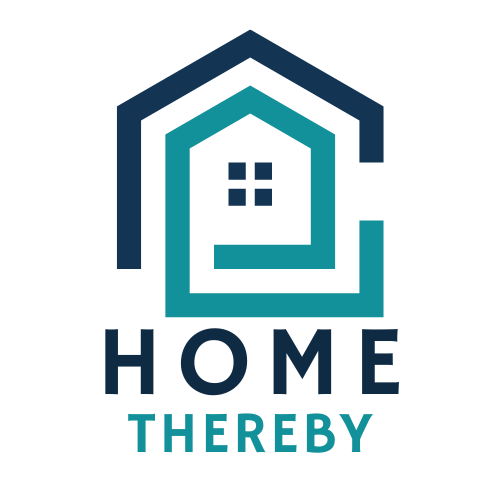
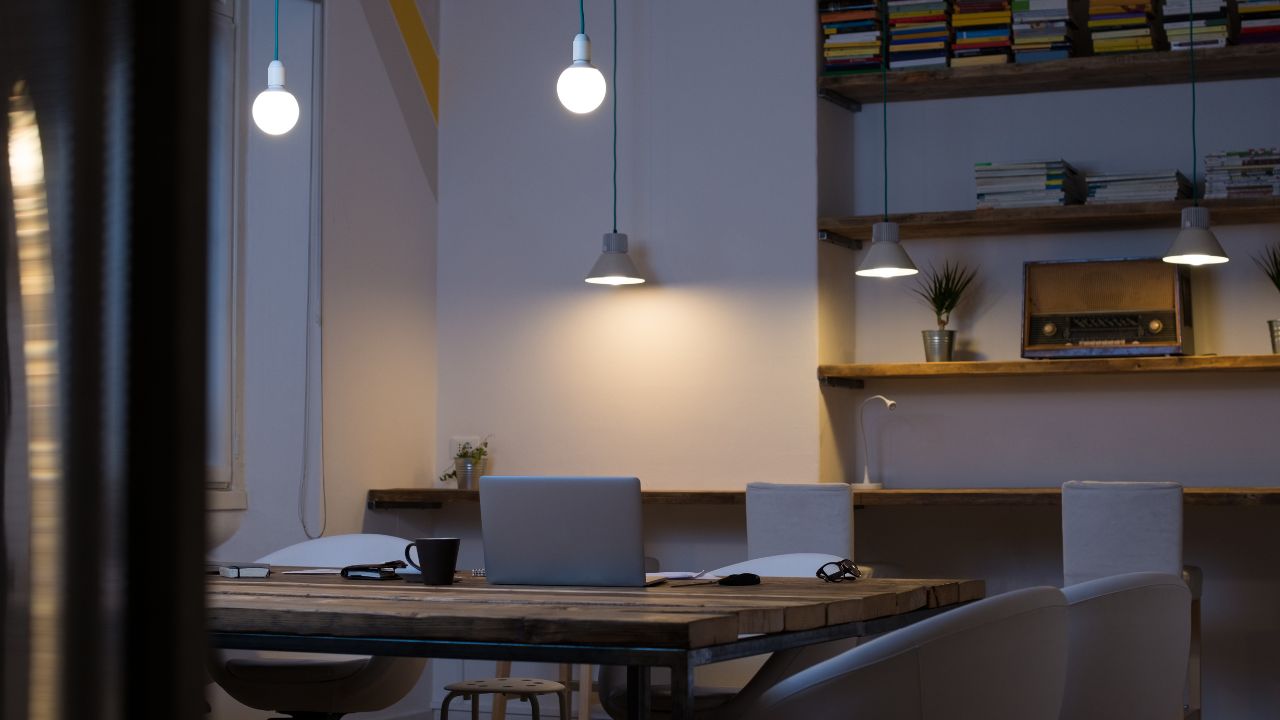

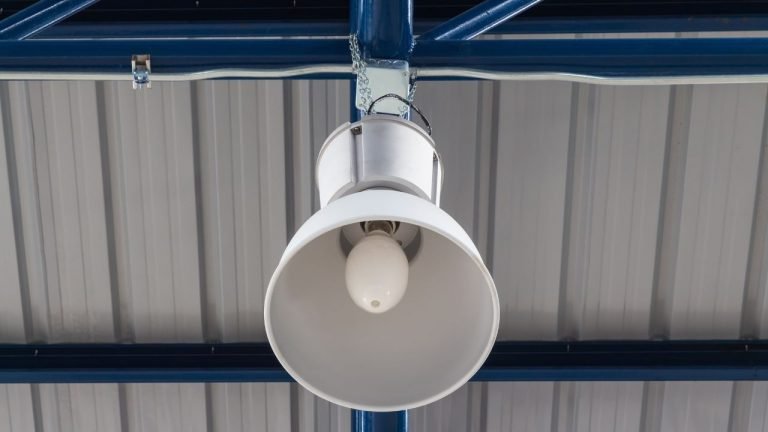

![Best Color Temperature For Home Office Lighting [Beginner’s Guide]](https://homethereby.com/wp-content/uploads/2022/09/Best-Color-Temperature-For-Home-Office-Lighting-768x432.jpg)
